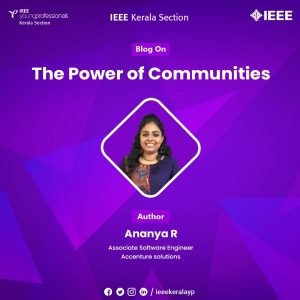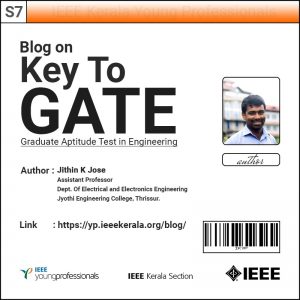Disclaimer: This write-up is not intended for a complete understanding of wind energy sector, rather it is focused on creating a reference for further learning.
Far away, from the human settlements, stand a gigantic figure, ready to sacrifice its life for a clean and green environment. Be it snow, heavy rains, scorching sun, typhoons, earthquakes or other natural calamities, these massive structures, you call them wind turbines, can withstand any extreme climatic conditions. A lot of them together constitute a wind farm. Do you know how they are born? Or what is wind resource assessment?
Let’s start from the basics. Wind turbines convert wind energy into electrical energy, using the aerodynamic principle [1]. Fig.1. shows the different parts of a turbine involved in the conversion steps. Though wind energy is intermittent, it is clean and helps meet the rising energy demands. It is important to accurately estimate the energy production from a wind farm. This is what a Wind Resource Assessment engineer does.
Fig.1. Parts of a wind turbine (ref: tmrblog.com)
Role of a Wind Resource Assessment (WRA) Engineer in the birth of a wind farm
Turbines can be installed on land (onshore), near the coast (inter-tidal) or in water (offshore). In order to build a wind farm, first and foremost thing is to identify a potential area. This is known as prospecting. Once the site is identified, a meteorological mast (in short met mast; nowadays remote sensing devices are becoming popular) is installed for data collection. Met mast consists of several sensors to measure wind speed (anemometer), wind direction (wind vane), temperature, pressure and relative humidity. Certain met masts also have pyranometers to collect the solar irradiance. Data is collected in a 10-minute interval for at least 1 year. This data is now analyzed and used to estimate the climatic conditions of the site (wind speed, weibull parameters, turbulence intensity, wind shear and air density). Ideally mast height should be the same as hub height (desired height of the turbine). But the turbines are evolving so quickly that higher and higher heights are being developed. Having a mast of that tall is not always possible. In such cases, we need to vertically extrapolate the mast measurements to the hub height; this process is called shearing. Wind shear plays a very important role in fixing the hub height, which is the height we are interested in. Upon estimating the site climatic conditions, the next step is to identify the suitable turbine model (site suitability). IEC 61400-1 Ed4 has defined certain classes based on the wind speed and turbulence and is shown in table 1. Based on the wind speed and turbulence intensity, a suitable turbine class is chosen. Inappropriate turbine class at a site leads to under-performance of the turbine; which in turn causes huge loss.
Table 1. IEC definition of wind turbine class
Turbines come in various capacities. For onshore, highest being 5MW and the least being 2MW (there are older machines with less capacity still running but new wind projects are proposed with at least 2MW turbines). In case of offshore, we have as large as 12MW. The number of turbines and individual machine capacity are chosen based on the wind farm size. Now that we have the site conditions estimated and the turbine configuration fixed, next is the most interesting part – energy estimation. It can be done using different softwares like windPRO, WAsP, WindFarmer, Openwind. Unfortunately none of them is free. The energy produced by a turbine depends on its power curve (most important characteristics of a turbine) [2]. For a wind farm developer, the job is almost over when the annual energy production is calculated. But for a manufacturer, there is one more step pending – loads check. The loading effect on each turbine component needs to be checked and if any exceedance from the design value is observed, mitigation strategies need to be applied. Manufacturers should certify that their turbines are capable of meeting the design life (normally it is 20 years, but these days customers demand even 25-30 years). Every step in the process should comply with IEC standards [3] or certification bodies (like DNV GL). Each project site is different and involves a lot of challenges, uncertainties and necessity for engineering judgments. There is always scope for learning and improvements.
Global Wind Scenario
Wind installations continue to increase every year. In 2019, 60.4 GW of wind capacity was installed globally, which is 19% more than in 2018. China leads both the onshore and offshore market. Another main market is the US, where offshore has now become a focus. Some of the emerging countries for onshore wind in Asia Pacific are Vietnam, Australia, India, Taiwan, Japan and South Korea, out of which the latter three have already entered the offshore industry. Taiwan is maturing at a faster pace compared to other countries. There are many issues with emerging markets like grid capacity limit, lack of proper policies and financing. Regulatory bodies are trying to come up with frameworks to better foster wind installations.
Opportunities
Any electrical/mechanical/civil/aeronautical engineer is capable of getting a role in the wind energy sector. There are M. Tech & diploma courses in renewable systems (not always necessary), sometimes wind energy in particular, which help in confining your area of focus. Campus recruitments are rare. For me, a post graduate degree in Power & Energy Engineering helped start my career in solar; though a year later I moved to wind, and now handling both solar and wind resource assessments. Key players in the wind turbine manufacturing include Vestas, Siemens Gamesa, GE, Goldwind, Enercon, Nordex Acciona, Senvion, etc. Wind energy sector involves wind farm developers, turbine manufacturers, consultants (whose energy reports are considered bankable) and parts supply group. To list some of the areas of opportunities in wind sector (onshore/offshore):
- WRA
- Electrical system design
- Computational fluid dynamics (CFD)
- AutoCAD (mechanical) design
- Loads assessment (mechanical)
- Data analytics
- Control systems engineering
- Turbine component design
- Wind power economics
Learning is the key to pursue any role.
References
[1]Danish Wind Industry Association http://xn--drmstrre-64ad.dk/wp-content/wind/miller/windpower%20web/en/tour/wres/index.htm
[2]http://xn--drmstrre-64ad.dk/wp-content/wind/miller/windpower%20web/en/tour/wres/pwr.htm
[3] IEC 61400 https://en.wikipedia.org/wiki/IEC_61400
Author biography
Preethy V. Warrier
Siting Engineer, Vestas
Preethy V. Warrier is currently working as Siting Engineer at Vestas Wind Technology India Pvt. Ltd., Chennai. She is a post graduate in Power & Energy Engineering, with experience in wind farm modelling and design of solar photovoltaic systems (utility scale and domestic). Her key responsibilities include wind data analysis, wind and solar production estimation, optimization and turbine loads check.
She is a Senior Member of IEEE and is currently serving as the Treasurer of Madras Section WIE AG and Chair of WePOWER Track in YESIST12. She has also taken several other leadership positions. She is also a member of IEEE Power & Energy Society.
https://www.linkedin.com/in/preethyvwarrier/
Email: preethy_v_warrier@ieee.org





Great Preethy.. All the very best
Very informative
Very Informative. Wish you had some mention about the need of Environmental and Social Impact Assessment studies… because although considered as “green” energy, wind and solar farms have their own impacts on the Environment which usually goes unnoticed. However, big players do identify those impacts and risk and have management systems to manage them.